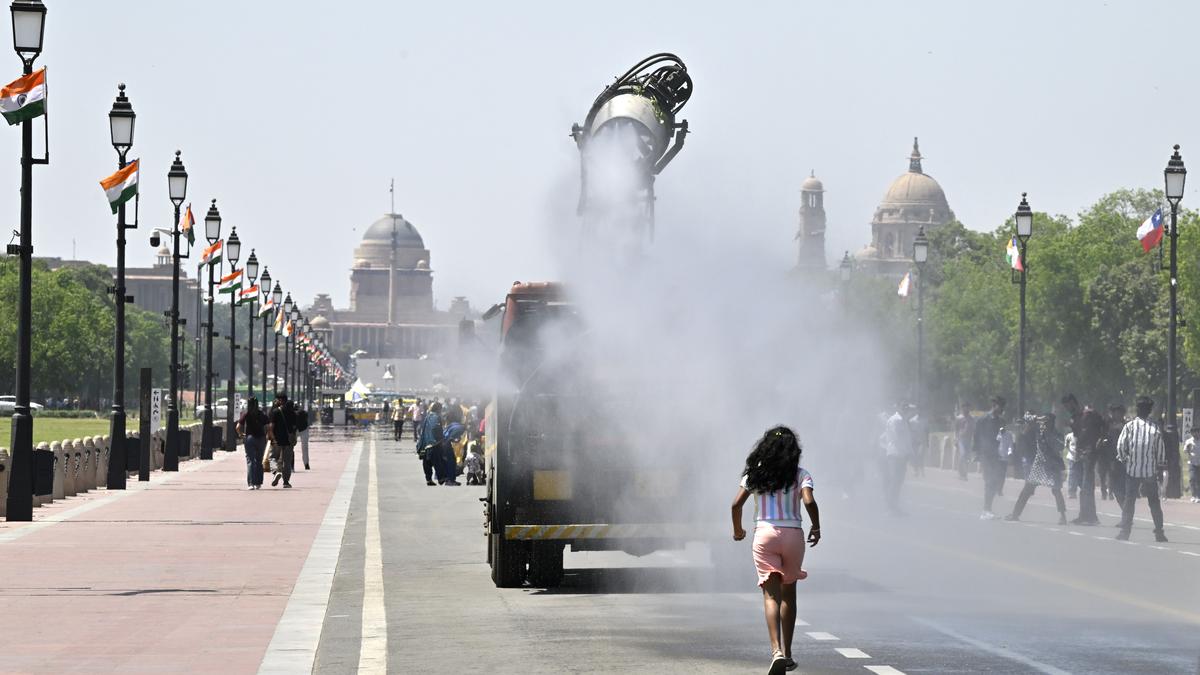India’s Air Pollution Crisis

- 03 Apr 2025
Context:
India’s air pollution crisis has evolved from a seasonal concern into a persistent public health emergency. Urban skylines disappearing under layers of smog, overflowing hospitals with respiratory cases, and frequent school closures point to the alarming scale of the issue. Indian cities consistently rank among the most polluted globally, and without a coordinated, inclusive, and locally-driven strategy, the situation may deteriorate further.
Institutional and Structural Complexities
Air pollution in India is not merely a technical issue; it is deeply embedded in structural and governance-related challenges. It reflects a mix of socio-economic disparities, weak municipal capacity, behavioral norms, and fragmented institutional mandates. Municipal bodies — key actors in controlling local pollution sources — often lack adequate funding, data access, and administrative autonomy. Their responsibilities are rarely aligned with national clean air targets.
India aims to reduce PM2.5 levels by 40% (from 2017 levels) by 2026 under the National Clean Air Programme (NCAP), but progress remains slow. This is due in part to a reliance on ambient air quality data, which can fluctuate based on meteorological factors and may not accurately reflect ground-level interventions. A shift toward activity-based metrics — such as the number of biomass stoves replaced or diesel vehicles retired — is needed to measure real impact.
Key Interventions and Their Gaps
India has introduced several programs to combat air pollution:
- National Clean Air Programme (NCAP): Targets 20–30% reduction in PM10 and PM2.5 by 2026 in 132 cities.
- Bharat Stage VI (BS-VI): Introduced in 2020 to enforce strict vehicular emission norms.
- Pradhan Mantri Ujjwala Yojana (PMUY): Promotes LPG usage to reduce dependence on biomass.
- FAME II: Incentivizes electric vehicles.
- Swachh Bharat Mission (Urban): Addresses urban waste, a significant pollution source.
However, between 2019 and 2023, only about 60% of NCAP funds were utilized — not due to lack of intent, but due to institutional misalignment and poor coordination. Additionally, India’s clean air budget is dwarfed by global comparisons; China invested ?22 lakh crore over five years, while India’s NCAP allocation is less than 1% of that. Even when related programs (PMUY: ?18,128 crore; FAME II: ?10,795 crore; SBM-U: ?1.4 lakh crore) are included, the challenge lies in integrating these efforts meaningfully.
The Need for a Phased, Data-Driven Approach
A transformative clean air strategy should include:
- Phase I: Build high-resolution, local emissions inventories.
- Phase II: Link funding to data-driven, actionable plans.
- Phase III: Track reductions in emissions, not just pollution concentrations.
Governance reforms must empower local authorities, integrate air quality goals into urban planning, and ensure open access to real-time emissions data.
Guarding Against Technological Overdependence
India must avoid over-reliance on AI dashboards, smog towers, and other high-tech tools that may benefit elite urban areas while neglecting rural and informal sectors — major contributors to emissions. Instead of focusing on optics, efforts must prioritize structural reforms and equitable interventions.
Global Lessons, Local Adaptation
India can learn from other countries:
- China: Closed coal plants aggressively.
- Brazil: Enabled community-led waste management.
- California: Reinvested pollution revenue in vulnerable populations.
- London: Implemented bans before adopting high-tech monitoring.
India’s path must be rooted in federalism, tailored to its informal economy, and driven by behavioral and structural change. Clean air must be recognized as a universal right, not a privilege — and achieving it demands people-centric governance, consistent funding, and courageous implementation.
